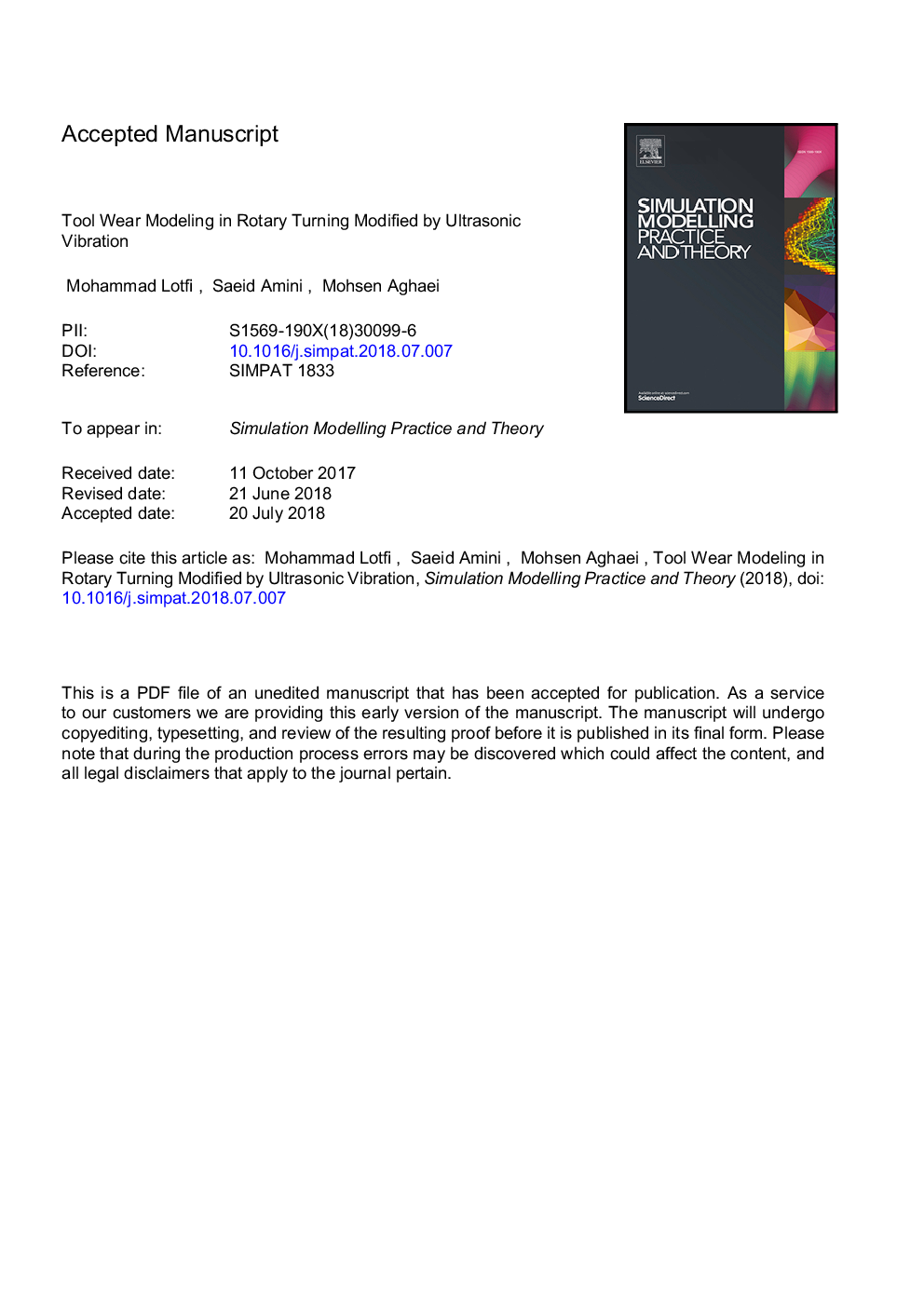| Article ID | Journal | Published Year | Pages | File Type |
|---|---|---|---|---|
| 6902477 | Simulation Modelling Practice and Theory | 2018 | 22 Pages |
Abstract
Modification of conventional turning operation is carried out by using different methods to improve machinability conditions. In this study, rotary turning is modified by adding ultrasonic vibrations to cutting tool. Accordingly, the effect of this method on output parameters namely, tool wear and temperature, cutting force, and surface roughness, is investigated. Having detailed analysis, finite element method is used beside the experiments. As a result, it was revealed that tool-chip engagement time during rotary motion of cutting tool significantly reduced wear propagation on tool faces. This was explained by heat analysis in which disengagement time resulted in lower heat transfer from chip to tool. Moreover, the result of surface roughness produced in vibratory-rotary turning was compared by rotary one.
Related Topics
Physical Sciences and Engineering
Computer Science
Computer Science (General)
Authors
Mohammad Lotfi, Saeid Amini, Mohsen Aghaei,
